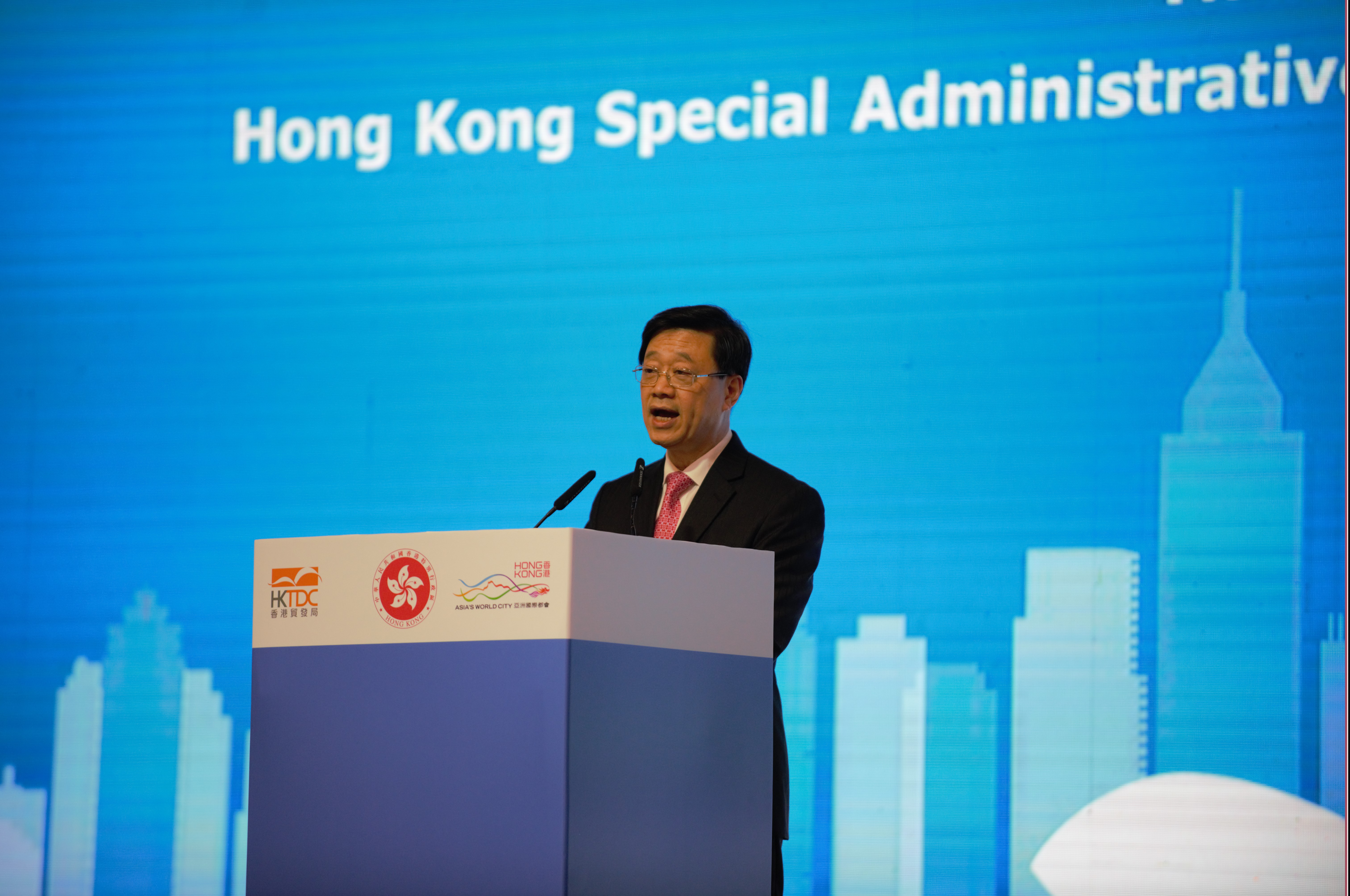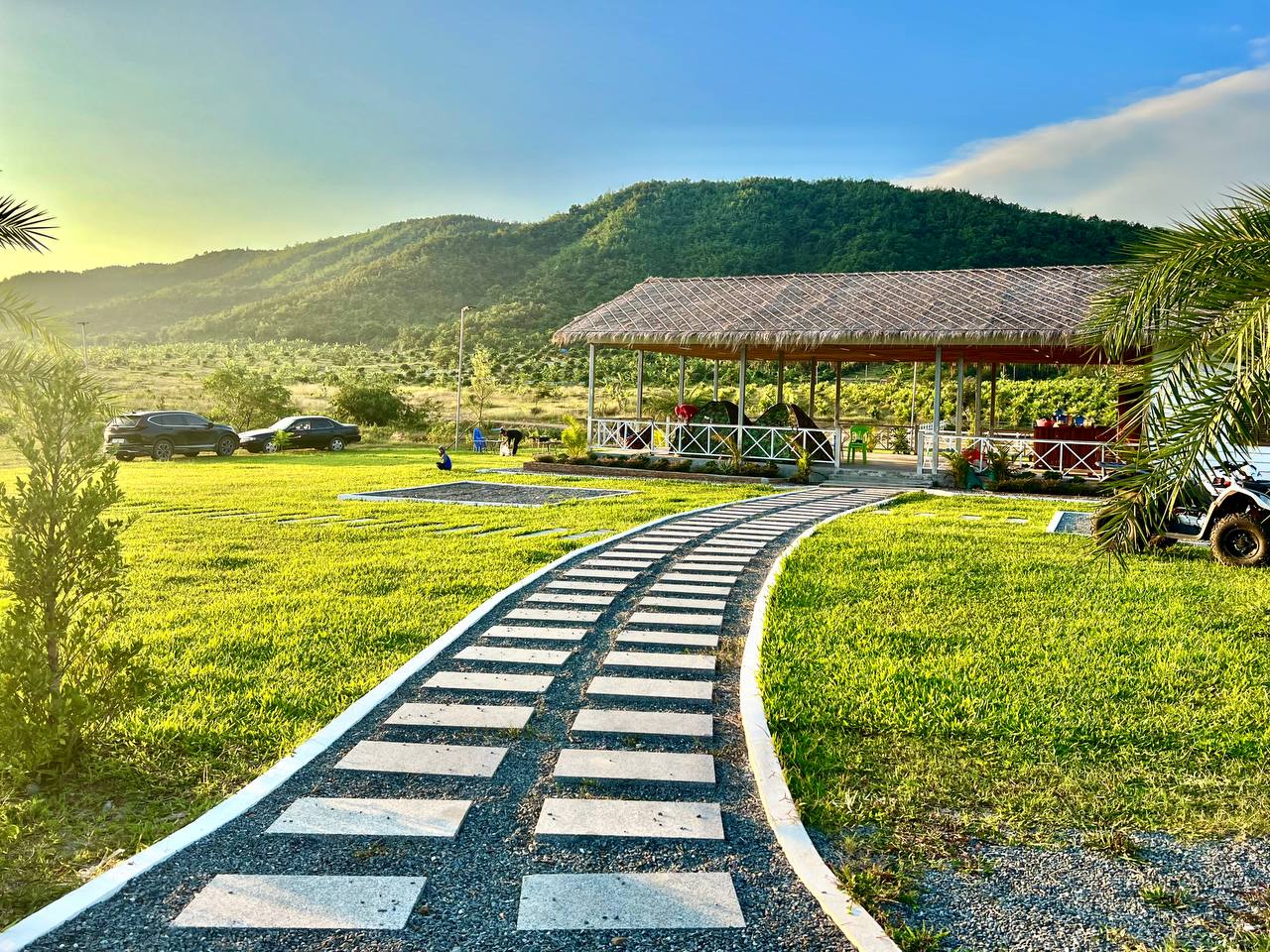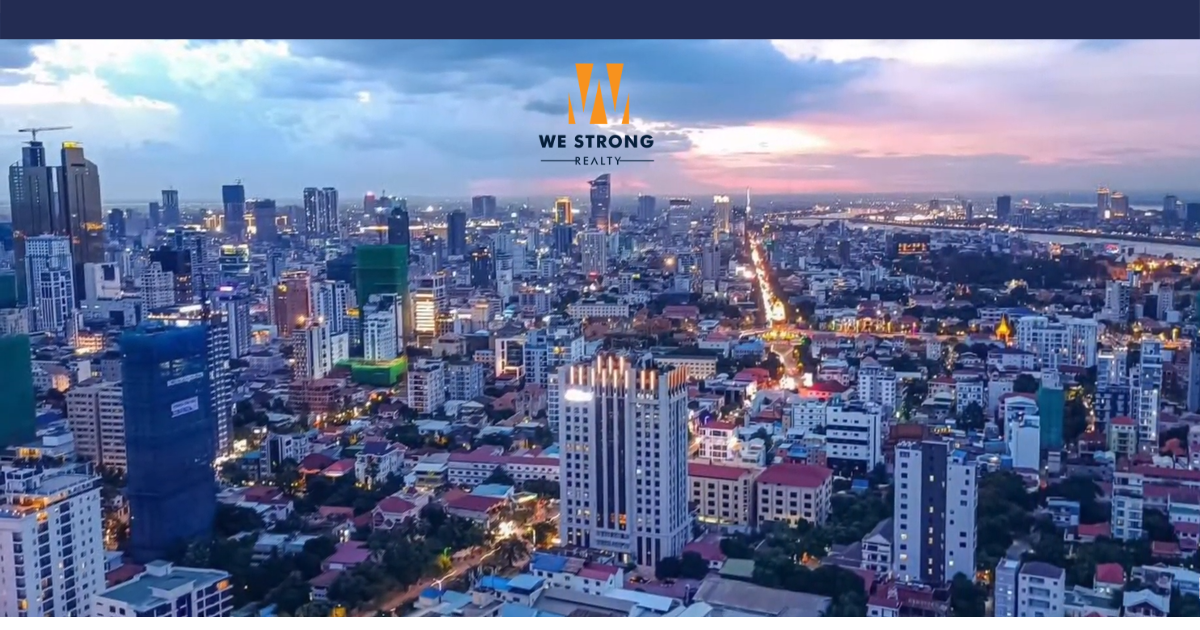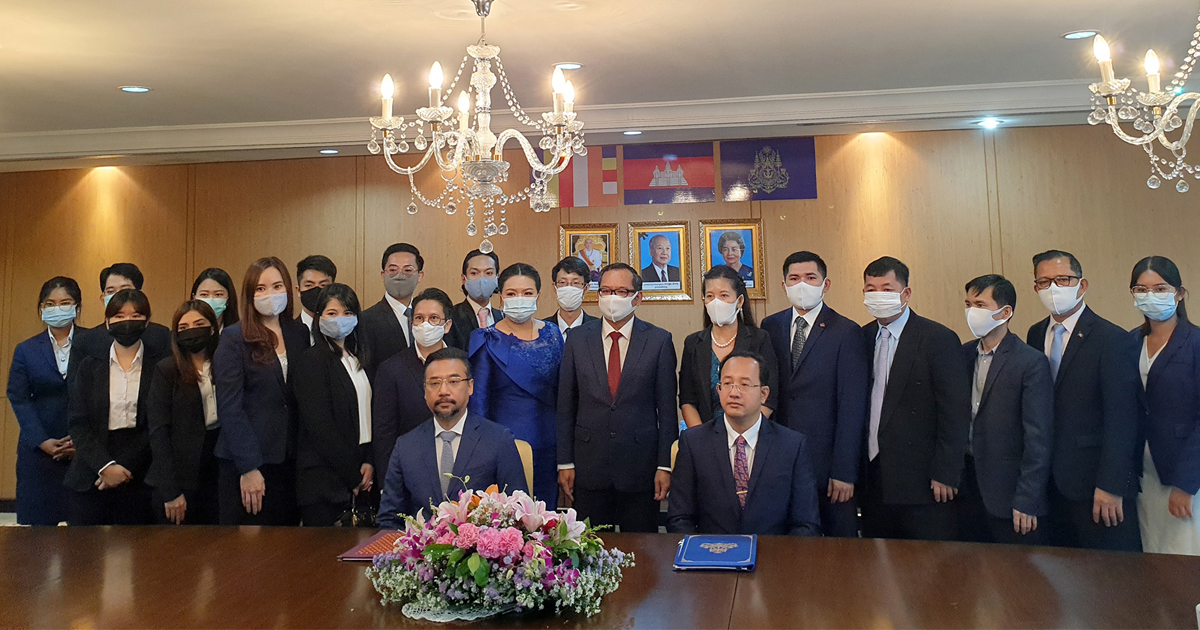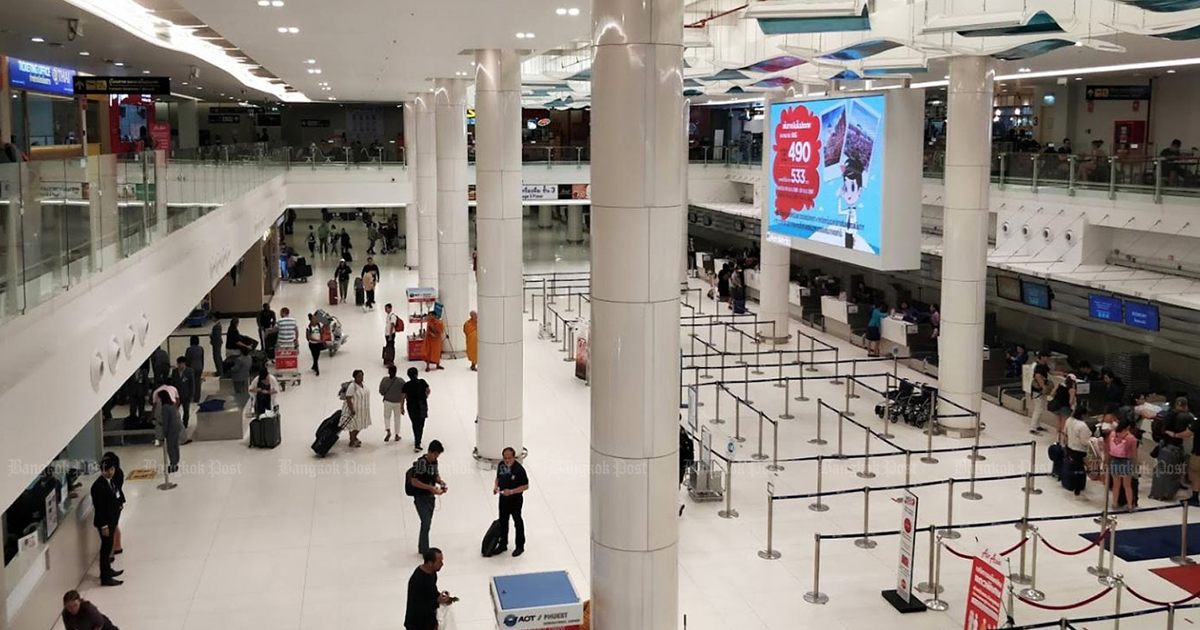តោះថ្ងៃនេះនាំគ្នារៀនបកប្រែអត្ថបទស្ដីពីសេដ្ឋកិច្ចកម្ពុជា ពាក្យថ្មីៗច្រើនណាស់!
បែកគ្នាជាងមួយសប្ដាហ៍ហើយ ប្រហែលជាប្រិយមិត្ត មិត្តអ្នកអានកំពុងទន្ទឹងរង់ចាំ អត្ថបទបកប្រែថ្មីជាមិនខានទេ។ ថ្ងៃនេះ BizKhmer សូមនាំមិត្តអ្នកអាន សិក្សាអត្ថបទថ្មីមួយដែលនិយាយអំពីវិស័យសេដ្ឋកិច្ចដែល អត្ថបទនេះដកស្រង់ចេញពី realestate.com.kh ដែលឯកឧត្តមបណ្ឌិត សុខ ស៊ីផាន់ណា អតីតរដ្ឋលេខាធិការនៃក្រសូងពាណិជ្ជកម្ម និងបច្ចុប្បន្នជាទីប្រឹក្សានៃរាជរដ្ឋាភិបាលកម្ពុជា ថ្លែងក្នុងកម្មវិធីតាំងពិព័រណ៍អចលនទ្រព្យមួយដែលរៀបចំឡើងដោយក្រុមហ៊ុន realestate.com.kh កាលពីខែឧសភា កន្លងទៅ។ តោះមានពាក្យ និងឃ្លាថ្មីៗអ្វីខ្លះ?
Economic Growth Prospects In Cambodia: The Gateway to ASEAN Region
In order to get the best insight into the future of Cambodian market, one needs to examine its complexities by looking at past trials and victories, current events, and the outside factors that contribute to its growth. This is exactly what Dr. Sok Siphana, founder and managing partner of Sok Siphana & Associates, said during his presentation at the Cambodia Real Estate Show.
Where does Cambodia stand?
Siphana explains that Cambodia has progressed significantly in the last two decades, backing up his claim with data gathered by ASEAN and the AmCham of Singapore. It is thanks to Cambodia’s economic progress that not only has the country been listed as one of the “Olympians of Growth” joining the ranks of China, Laos, India, and Vietnam but also listed by the Asian Development Bank (ADB) as one of the new “Tiger Economies In Asia” and declared a lower-middle income economy by the International Monetary Fund (IMF).
For Siphana, trade which is growing by leaps and bounds is one of the key drivers of the country’s economy. In fact, Cambodia was the biggest trade partner of ASEAN in 2014 – focusing on exporting finished goods directly to the market and importing raw materials for industrial sector. In 2015 alone, the export volume amounted to $8.5 billion and the import volume a whopping $10.6 billion. He explains that the increasing trading volume was due to growth in agriculture, manufacturing, and construction boom that Cambodia was experiencing.
“For 20-something years, we have managed to come from a war-torn country with nothing to being an Olympian of Growth. So, we must say that we are doing very well,” Siphana said.
He also attributes the growth to the accession of Cambodia to WTO, explaining that in 2004 Cambodia joined WTO and that is when the country opened up the whole economy and the effect of this economic liberalization took place. And that explains why we are now doing so well.
But the question remains. With everything happening now, will Cambodia remain a growing economy?
How are world events going to affect Cambodian economy?
Siphana paints a backdrop using world events to portray changes that may occur in Cambodia in the near future
He explains Donald Trump’s victory will cause divisions and alliances for his “Make America Great Again” movement and that America’s gain may be the detriment of some. The relation between the US and North Korea does not see any positive sign at all. A threat of a nuclear war is getting everyone unsettled.
A glimmer of hope, however, lies in increased Chinese investments – especially with the Belt and Road Initiative underway. Siphana assures that while Cambodia is not exactly in tranquil waters because of some regional issues, this isn’t enough to cause an egress in the economy. Nonetheless, he explains that on the issues of the South China Sea, the willingness of President Duterte to open a dialogue with China has resulted in less tension at the ASEAN summit, showing the possibility of more stable waters to sail.
Interest in ASEAN remains high with some people still wanting to invest in this potential association. In this context, Siphana praises Cambodia’s economic performance and potential, saying: “for Cambodia we’re not doing so bad. There’s still some serious investors very keen to invest in the country. We still have a very strong attraction in terms of people who come to invest in ASEAN. And people in ASEAN invest in Cambodia.” Still, some of Cambodia’s biggest investors so far come from China, Japan, Thailand, Korea, and the U.S.
What policies are being developed to strengthen Cambodia’s economy?
The vision of the Royal Government of Cambodia is to create a modernized industrial make-up for the country, a make-up that focuses on being a skills-driven industry rather than a labor-intensive one.
With this aim, Cambodia needs a few vital methods by strengthening linkages with global value chain and integration into regional production networks by developing clusters of interconnected manufacturing production. Furthermore, Cambodia needs to strengthen the competitiveness and productivity of its domestic industries by moving toward modernizing technology and knowledge-based industries.
អត្ថបទមុន៖
ថ្ងៃនេះរៀនបកប្រែអត្ថបទ «វិស័យមីក្រូហិរញ្ញវត្ថុ» ម្ដងមើល៍ មានពាក្យថ្មីអ្វីខ្លះ?
ថ្ងៃនេះថ្ងៃសម្រាក BizKhmer មានវគ្គរៀនបកប្រែពិសេសអំពី «វេទិកាសេដ្ឋកិច្ចពិភពលោក»!
តោះថ្ងៃនេះ រៀនភាសាអង់គ្លេសអំពីការនាំចេញអង្ករម្ដង!
វគ្គរៀនបកប្រែអត្ថបទអង់គ្លេសមកដល់ទៀតហើយ! មានអ្វីពិសេស?
Trade, one of the biggest industries in the country, has thus far shifted from focusing on wood products and textile towards industry and technology, paving the way to a steady progression toward diversification, according to Siphana.
He concludes by saying there is a tendency to look at Cambodia as just a small market, but clarifies that owing to Cambodia’s openness to international investment, even though we are a small market, we are nonetheless now a gateway to ASEAN which is a bigger market.
ពាក្យថ្មីៗ
Economic Growth Prospect: ទស្សនវិស័យនៃកំណើនសេដ្ឋកិច្ច
Gateway to: ច្រកទៅកាន់
get the best insight into: ស្វែងយល់ឱ្យកាន់តែស៊ីជម្រៅ
examine: ពិនិត្យមើល
complexities: ភាពស្មុគស្មាញ
trials and victories: បញ្ហានិងភាពជោគជ័យ
progressed significantly: រីកចម្រើនយ៉ាងខ្លំាង
Olympians of Growth: ជើងឯកកំណើនសេដ្ឋកិច្ច Olympian
lower-middle income economy: ប្រទេសដែលមានប្រាក់ចំណូលមធ្យមកម្រិតទាប
grow by leaps and bounds: កើនឡើងយ៉ាងលឿន/មានសន្ទុះទៅមុខយ៉ាងលឿន
finished goods: ទំនិញសម្រេច
boom: រីកលូតលាស់ខ្លាំង
war-torn country: ប្រទេសដែលហែកហួរដោយសារសង្គ្រាម
accession: ការចូលជាសមាជិក
liberalization: សេរីភាវូបនីយកម្ម
cause divisions and alliances: បង្កឱ្យមានការបែកបាក់និងបង្កើតជាសម័ន្ធភាព
movement: ចលនា
gain: ផលប្រយោជន៍ឬផលចំណេញ
detriment: អន្តរាយ ឬខូចផលប្រយោជន៍
getting everyone unsettled៖ ធ្វើឱ្យម្នាក់ៗមិនសុខ ឬព្រួយបារម្ភ
a glimmer of hope: ក្ដីសង្ឃឹមនៅតែមាន/នៅតែលេចឡើង
to be underway: កំពុងតែប្រព្រឹត្តទៅ
tranquil waters: ដែនទឹកប្រកបដោយសន្តិភាព
egress: ដំណើរឃ្លាតចេញ
open a dialogue: បើកការសន្ទនារ
to create a modernized industrial make-up: បង្កើតទីតាំងឧស្សាហកម្មដ៏ទំនើបមួយ
skills-driven industry : ឧស្សាហកម្មដែលផ្តោតទៅលើជំនាញ
labor-intensive: ដែលផ្តោតទៅលើកម្លាំងពលកម្ម
integration: សមាហរណកម្ម
textile: វាយនភណ្ឌ
steady progression: ដំណើររីកលូតលាស់ដ៏រឹងប៉ឹង
diversification: ពិពិធកម្ម
tendency: និន្នាការ
វគ្គសិក្សាបកប្រែសារព័ត៌មាន និងអត្ថបទដែលផ្តោតទៅលើផ្នែកអាជីវកម្ម ត្រូវបានបើកបង្រៀនកាលពីពាក់កណ្ដាលខែឧសភា កន្លងទៅ ក៏ប៉ុន្តែការទទួលពាក្យចុះឈ្មោះចូលរៀនវគ្គសិក្សានេះ នឹងនៅតែបន្តព្រោះនឹង មានវគ្គសិក្សាថ្មីៗជាច្រើនទៀត។
ដោយមើលឃើញពីការដើរតួនាទីយ៉ាងសំខាន់នៃប្រព័ន្ធផ្សព្វផ្សាយ ជាពិសេសគឺការប្រើប្រាស់ប្រព័ន្ធផ្សព្វផ្សាយ (media) ដើម្បីផ្សព្វផ្សាយអាជីវកម្ម និងការប្រើប្រាស់ភាសាអង់គ្លេសសម្រាប់ទំនាក់ទំនងក្នុងអាជីវកម្មនាពេលបច្ចុប្បន្ន ទើបវគ្គសិក្សានេះត្រូវបានបង្កើតឡើង ក្នុងគោលដៅផ្សារភ្ជាប់វិស័យទាំងពីរ និងដើម្បីឱ្យអ្នកសិក្សាបានស្វែងយល់កាន់តែទូលំទូលាយលើប្រព័ន្ធផ្សព្វផ្សាយ និងបានសិក្សាភាសាអង់គ្លេសបន្ថែមទៀតផង។
វគ្គសិក្សានេះ មានរយៈពេល ៣ខែ ហើយតម្លៃសិក្សាវិញត្រឹមតែ ៦០ដុល្លារតែប៉ុណ្ណោះ។
កម្មវត្ថុ និងអត្ថប្រយោជន៍នៃវគ្គសិក្សានេះ៖
១) អនុវត្តន៍ការបញ្ចេញសំឡេងជាមួយកម្មវិធីកុំព្យូទ័រ (បញ្ចេញសំឡេងតាមជនជាតិនិយាយភាសាអង់គ្លេស)
២) បញ្ចូលរូបមន្តសារព័ត៌មាន (គ្រោងព័ត៌មាន ធាតុផ្សំ ខ្លឹមសារ …)
៣) បកប្រែពាក្យ និងឃ្លាថ្មីៗត្រូវតាមបរិបទនៃការប្រើប្រាស់ (vocabulary, sentence, idiom and phrasal verb)
៤) យល់ពីវិធីបកប្រែរបស់អ្នកសារព័ត៌មានពីការអនុវត្តជាក់ស្ដែង (ពីអង់គ្លេសទៅខ្មែរ)
៥) បញ្ចូលពីរបៀបសរសេរលក្ខណៈសារព័ត៌មាន (សំខាន់សម្រាប់អាជីវកម្ម)
៦) យល់ដឹងពីតួនាទីអ្នកបកប្រែសារព័ត៌មាន
៧) យល់ដឹងពីបរិបទនៃអត្ថបទនីមួយៗ
៨) អនុវត្តការបកប្រែអត្តបទព័ត៌មានជាក់ស្ដែង និងព័ត៌មានថ្មីៗទាំងក្នុងស្រុក និងក្នុងតំបន់
៩) បញ្ចូលរបៀបសរសេរអ៊ីម៉ែលសម្រាប់ការទំនាក់ទំនងអាជីវកម្ម
១០) យល់ដឹងពីអត្ថបទអប់រំផ្នែកអាជីវកម្ម (business and entrepreneurship related articles)
១១) បន្ថែមការពន្យល់លើវេយ្យាករណ៍ទាំងខ្មែរ និងអង់គ្លេស
១២) អ្វីដែលកាន់តែពិសេស គឺវគ្គសិក្សានេះនឹងមានបញ្ចូលទ្រឹស្ដី និងទស្សនទានអាជីវកម្មសំខាន់ៗ
កម្មវិធីនេះសម្រាប់សិស្ស និស្សិត អ្នកបម្រើការងារក្នុងវិស័យឯកជន អ្នកយកព័ត៌មាន អ្នកបកប្រែព័ត៌មាន និងអ្នកធ្វើការផ្នែកទីផ្សារ និងម៉ាកយីហោ។ ការសិក្សាគឺធ្វើឡើងនៅម៉ោង ៩ដល់ ១១ កន្លះរៀងរាល់ថ្ងៃសៅរ៍ និងអាទិត្យ។ ទីតាំង៖ សាលា ECE ក្បែរអង់តែនទួលគោក ដែលមានអាសយដ្ឋាន #150 bc1&2, ផ្លូវ ៥១៦ សង្កាត់បឹងកក់១ ខណ្ឌទួលគោក រាជធានីភ្នំពេញ។ ព័ត៌មានបន្ថែម សូមទាក់ទងតាមរយៈ ០១២ ៦៦៦ ១០៤ និង ០១៥ ២២៤ ២៩៩។





